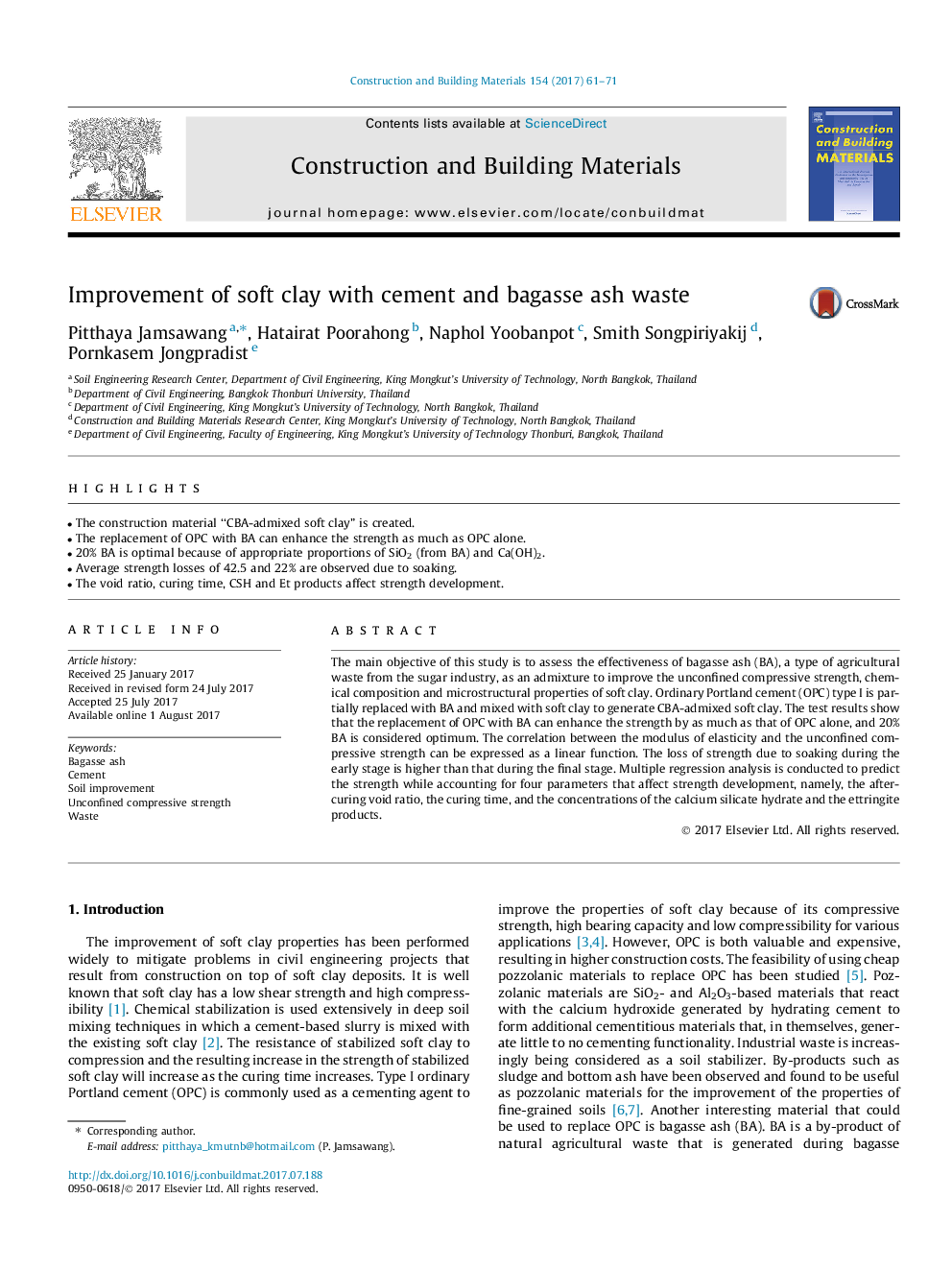| Article ID | Journal | Published Year | Pages | File Type |
|---|---|---|---|---|
| 6480048 | Construction and Building Materials | 2017 | 11 Pages |
â¢The construction material “CBA-admixed soft clay” is created.â¢The replacement of OPC with BA can enhance the strength as much as OPC alone.â¢20% BA is optimal because of appropriate proportions of SiO2 (from BA) and Ca(OH)2.â¢Average strength losses of 42.5 and 22% are observed due to soaking.â¢The void ratio, curing time, CSH and Et products affect strength development.
The main objective of this study is to assess the effectiveness of bagasse ash (BA), a type of agricultural waste from the sugar industry, as an admixture to improve the unconfined compressive strength, chemical composition and microstructural properties of soft clay. Ordinary Portland cement (OPC) type I is partially replaced with BA and mixed with soft clay to generate CBA-admixed soft clay. The test results show that the replacement of OPC with BA can enhance the strength by as much as that of OPC alone, and 20% BA is considered optimum. The correlation between the modulus of elasticity and the unconfined compressive strength can be expressed as a linear function. The loss of strength due to soaking during the early stage is higher than that during the final stage. Multiple regression analysis is conducted to predict the strength while accounting for four parameters that affect strength development, namely, the after-curing void ratio, the curing time, and the concentrations of the calcium silicate hydrate and the ettringite products.
